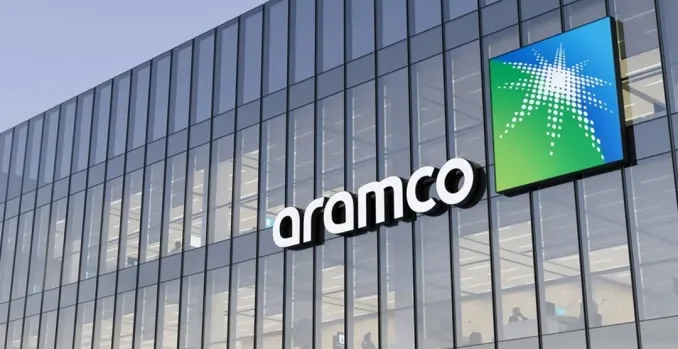A Major Step Toward Carbon Neutrality and Climate Innovation
Saudi Aramco has taken a groundbreaking step in the fight against climate change by launching Saudi Arabia’s first Direct Air Capture (DAC) test unit. This milestone marks a significant advancement in the country’s efforts to develop and implement cutting-edge carbon reduction technologies.
Developed in collaboration with Siemens Energy, the DAC unit is designed to remove carbon dioxide (CO₂) directly from the atmosphere, offering a promising solution for addressing global greenhouse gas emissions. The pilot facility currently has the capacity to remove 12 tons of CO₂ annually, a small but vital step toward scaling up the technology.
This development aligns with Saudi Arabia’s broader vision for sustainability, as part of the Saudi Green Initiative and the Kingdom’s goal of achieving net-zero emissions by 2060. Aramco’s investment in DAC technology reinforces its commitment to reducing its carbon footprint and leading the way in energy transition efforts.
Understanding Direct Air Capture (DAC) Technology
Direct Air Capture (DAC) is an innovative and rapidly evolving climate technology that removes CO₂ directly from ambient air. Unlike traditional carbon capture systems, which focus on capturing emissions at industrial sources like power plants and factories, DAC can extract CO₂ from anywhere in the atmosphere.
The captured CO₂ can either be permanently stored underground in geological formations or repurposed for various industrial applications. These include enhancing oil recovery, producing sustainable fuels, and manufacturing eco-friendly chemicals.
DAC technology is widely regarded as a critical tool for achieving global climate targets. The Intergovernmental Panel on Climate Change (IPCC) has highlighted the need for large-scale carbon removal solutions like DAC to limit global temperature rise to 1.5°C above pre-industrial levels.
However, DAC still faces key challenges, particularly in terms of energy consumption and cost. Current methods require significant amounts of electricity and heat, making scalability a primary concern. Aramco’s pilot facility aims to test and refine these technologies to improve their efficiency and affordability.
Aramco’s Strategic Goals and Future Plans
The launch of the DAC test unit is part of Aramco’s broader sustainability strategy to achieve net-zero Scope 1 and Scope 2 greenhouse gas emissions across its wholly-owned operated assets by 2050.
Ali A. Al-Meshari, Aramco’s Senior Vice President of Technology Oversight and Coordination, emphasized the role of DAC technology in reducing emissions from hard-to-abate sectors. He stated that the pilot facility serves as an essential stepping stone toward scaling up DAC solutions both within Saudi Arabia and internationally.
Aramco and Siemens Energy will use the test unit as a platform for evaluating next-generation CO₂ capture materials and processes. The goal is to develop more cost-effective methods that can make DAC a viable option for large-scale deployment.
Additionally, the project will contribute to research efforts aimed at integrating DAC with renewable energy sources such as solar and wind power. By leveraging Saudi Arabia’s abundant renewable energy resources, future DAC facilities could operate with significantly lower carbon footprints.
Aramco has also expressed its intention to expand this initiative into full-scale DAC plants in the coming years, positioning Saudi Arabia as a leader in carbon removal technologies.
Complementary Carbon Capture Initiatives
The DAC test unit is not Aramco’s only venture into carbon management. The company has been actively investing in various carbon capture, utilization, and storage (CCUS) projects.
In December 2024, Aramco, alongside global partners Linde and SLB, signed a shareholders’ agreement to establish a major CCS hub in Jubail, Saudi Arabia. The first phase of this hub aims to capture and store up to 9 million tons of CO₂ per year by 2027.
Saudi Arabia has also announced plans to become a global leader in CCS technology, with ambitions to capture and store 44 million tons of CO₂ annually by 2035.
The combination of DAC and CCS projects highlights the Kingdom’s dual approach to carbon management—capturing CO₂ both at the source of emissions and directly from the air. These initiatives are expected to play a crucial role in reducing Saudi Arabia’s carbon footprint while supporting its ongoing oil and gas operations.
Challenges and Industry Perspectives
Despite its potential, DAC technology still faces significant challenges. Critics argue that DAC is currently too expensive and energy-intensive to be a large-scale solution for carbon removal. The cost of capturing CO₂ from the air is estimated to be much higher than traditional CCS methods, which capture emissions directly from industrial sources.
However, proponents of DAC believe that with technological advancements and economies of scale, costs can be significantly reduced. Many leading energy companies and governments worldwide are investing in DAC research to improve efficiency and make it a key component of future climate strategies.
Aramco’s initiative reflects a growing trend among oil and gas companies exploring carbon removal as part of their long-term business models. The company’s investment in DAC demonstrates its commitment to innovation and leadership in sustainable energy solutions.
Experts believe that DAC could become a crucial tool for offsetting emissions from industries that are difficult to decarbonize, such as aviation, shipping, and heavy manufacturing. As the technology matures, it may also open new economic opportunities, such as carbon credit markets and sustainable fuel production.
Conclusion: A Landmark Step Toward a Greener Future
The launch of Saudi Arabia’s first DAC test unit by Aramco represents a bold step toward climate innovation. While DAC technology is still in its early stages, Aramco’s investment signals a long-term commitment to advancing carbon capture solutions.
By combining DAC with existing CCS initiatives, Aramco is working to create a comprehensive carbon management strategy that aligns with global climate goals. If successful, these efforts could position Saudi Arabia as a leader in carbon removal technology, paving the way for a more sustainable energy future.
As DAC technology continues to develop, its role in mitigating climate change could become increasingly vital. Aramco’s pilot project serves as an important experiment in scaling up this technology and integrating it into the global energy transition.
Do follow gulf magazine on Instagram
for more information click here


